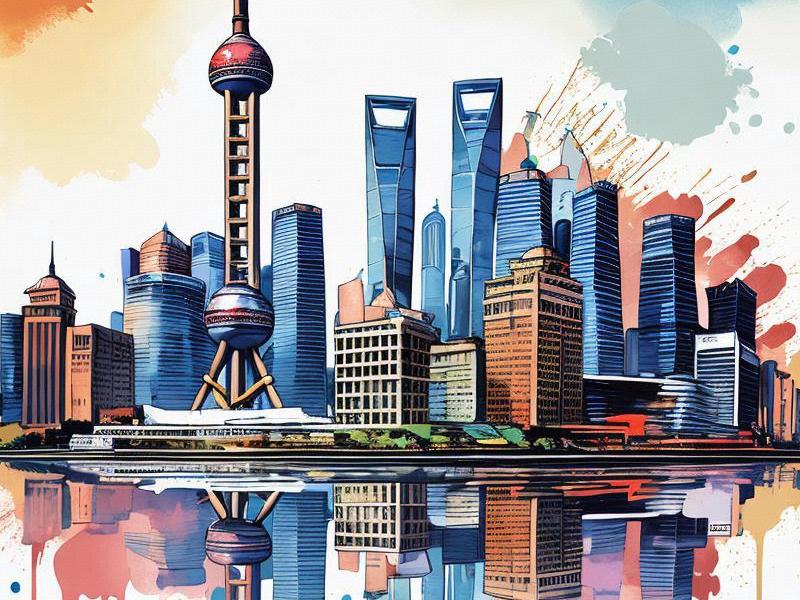Shanghai's Renaissance: A Journey Through the City's Modern Transformation
⏱ 2025-04-25 17:04 🔖 上海品茶工作室
📢0℃

Shanghai, known as the "Pearl of the Orient," has long been a symbol of China's historical and cultural richness. However, in recent decades, the city has undergone a dramatic transformation, emerging as a global metropolis that seamlessly blends tradition with modernity. This article takes a closer look at Shanghai's journey through urbanization, economic growth, and cultural renaissance.
The architectural landscape of Shanghai is a testament to its evolution. The Bund, once a collection of colonial-era buildings, now stands as a symbol of the city's historical significance. These grand structures, with their Art Deco facades, overlook the futuristic skyline of Pudong, home to the iconic Oriental Pearl Tower and the Jin Mao Tower. The juxtaposition of these two worlds reflects Shanghai's ability to preserve its past while embracing the future.
The economic rise of Shanghai has been nothing short of extraordinary. In the late 20th century, the city was designated as one of China's four Special Economic Zones, paving the way for rapid industrialization and foreign investment. Today, Shanghai is the financial capital of China, hosting the world's busiest container port and a major hub for international trade and commerce. The city's skyline is dotted with skyscrapers, including the world-famous Shanghai Tower, which stands as the tallest building in China and the second-tallest in the world.
Culturally, Shanghai has embraced its cosmopolitan identity. The city is a melting pot of different cultures, with influences from the West, East, and beyond. This cultural diversity is evident in the city's vibrant art scene, culinary offerings, and festivals. The Shanghai Museum is a treasure trove of Chinese art and history, attracting millions of visitors each year. The city's nightclubs, theaters, and galleries offer a glimpse into its dynamic cultural scene.
夜上海419论坛
However, Shanghai's rapid transformation has not been without challenges. The city faces issues such as housing shortages, traffic congestion, and environmental concerns. The rapid urbanization has led to the displacement of many residents, raising questions about the social impact of development. Additionally, the city's air quality and water pollution remain concerns that need to be addressed.
Despite these challenges, Shanghai continues to evolve and adapt. The city has implemented various initiatives to promote sustainable development and improve the quality of life for its residents. The construction of green spaces, such as the Shanghai Greenway network, aims to enhance the city's environmental sustainability. The government has also introduced policies to address housing affordability and traffic congestion.
Shanghai's transformation is not just about physical infrastructure; it is also about the people who call this city home. The influx of migrants from other parts of China has contributed to the city's cultural diversity and economic growth. These migrants, often referred to as "migrant workers," play a crucial role in Shanghai's economy, working in industries ranging from manufacturing to services. Their stories are an integral part of Shanghai's narrative, reflecting the city's resilience and adaptability.
上海龙凤419杨浦
The city's education system has also undergone significant changes to meet the demands of a modern, globalized economy. Shanghai has invested heavily in education, with its schools and universities consistently ranking among the best in the country. The city's emphasis on innovation and technology has fostered a culture of entrepreneurship, attracting startups and tech companies from around the world.
Shanghai's transformation is a microcosm of China's broader urbanization story. As the country continues to urbanize, cities like Shanghai face the challenge of balancing economic growth with social and environmental sustainability. The experiences of Shanghai offer valuable lessons for other cities in China and around the world.
The city's leadership has recognized the importance of innovation and technology in driving future growth. Shanghai has established itself as a hub for fintech, artificial intelligence, and biotechnology, attracting top talent and investment from around the globe. The city's commitment to innovation is evident in initiatives such as the Zhangjiang Hi-Tech Park, which houses numerous research institutions and startups.
上海私人品茶
Shanghai's cultural renaissance is also evident in its efforts to preserve and promote traditional Chinese culture. The city has invested in cultural heritage projects, such as the restoration of historic buildings and the preservation of intangible cultural heritage. Events like the Shanghai International Film Festival and the Shanghai Fashion Week showcase the city's commitment to fostering a vibrant cultural scene.
The challenges that Shanghai faces are not unique; they are part of the broader urbanization process that many cities around the world are grappling with. The city's ability to address these challenges while maintaining its unique identity is a testament to its resilience and adaptability. Shanghai's story is one of transformation, a city that has embraced change while preserving its essence.
In conclusion, Shanghai's journey through urbanization, economic growth, and cultural renaissance is a story of resilience, adaptability, and innovation. The city's transformation is a testament to the power of human ingenuity and determination. As Shanghai continues to evolve, it remains a beacon of modernity and a symbol of China's rapid urbanization. The experiences of Shanghai offer valuable lessons for other cities in China and around the world, highlighting the importance of balancing economic growth with social and environmental sustainability.
Shanghai 2040: Where Futurism and Heritage Collide in China's Global MegacityShanghai 2040: How China's Global City Is Reinventing Urban LivingThe Phoenix of the East: How Shanghai is Reinventing Global Cultural InfluenceShanghai's Green Transformation: Pioneering Sustainable Urban Development in the 21st Century【摩登密码】从月份牌到元宇宙:上海女性审美百年流变录Shanghai's Vibrant Lifestyle, from Historical Pedigree to a Global Metropolis【特别调查】"共饮一江水:长三角生态绿色一体化发展示范区三年成效报告"【摩登密码】从石库门到元宇宙:上海女性的百年形象革命Shanghai’s Digital Elegance: Where Tradition Meets Tomorrow’s Frontier in BeautyShanghai's Nightlife Evolution: How Luxury Entertainment Clubs Are Redefining Urban Social Culture
海派烟火眉:上海美女的市井诗行与精神注脚《霓虹深处:南京东路百年商业街的进化论》《百乐门到元宇宙:上海娱乐会所进化论》霓虹与檀香:上海高端会所三十年文化流变"四段式模板
7. 历史参考:前两篇分别以"感官革命"和"时空折叠"为切入点,本次需创新视角
8. 时效元素:当前为2025年,可融入AI、元宇宙等现代科技元素
9. 价值导向:展现独立、智慧的当代上海女性形象,规避物化倾向
以下是符合要求的深度特稿:《梧桐树下的方程式:95后女科学家与旗袍实验室的双城记》《石库门密码:上海里弄建筑的时空折叠》《石库门里的时光标本》《梧桐树下的城市镜像》梧桐区镜像:上海女性的空间叙事与身份建构
空间修辞,身体政治,时尚语法,记忆拓扑,社群算法

